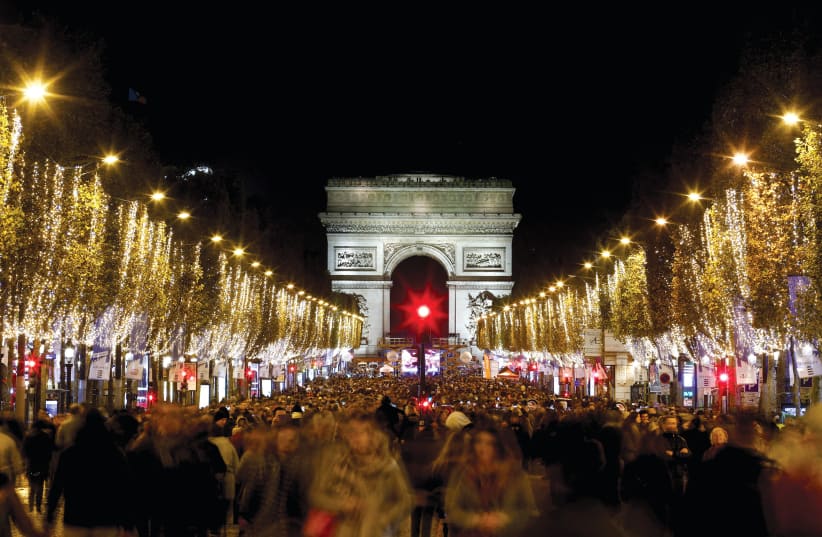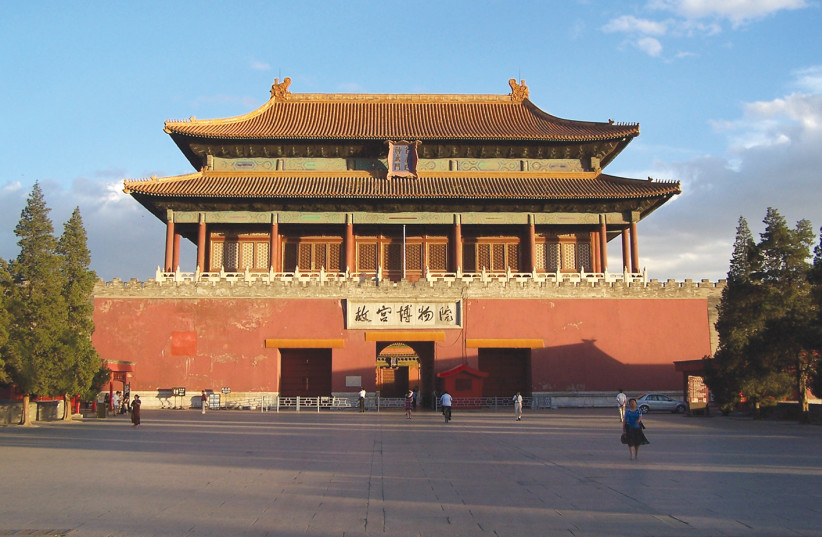Ever wondered why New York is called The Big Apple and New Orleans is called The Big Easy? Well, I have. So let’s take a little geographical galavant and see how certain cities came by their metropolitan monikers.
The Big Apple as a nickname for New York City was first popularized in the 1920s by John Fitz Gerald, a sportswriter for the New York Morning Telegraph. Fitz Gerald reportedly heard two stable hands at the New Orleans Fair Grounds describe New York’s racetracks as “The Big Apple.”
Fitz Gerald referred to the “Big Apple” frequently thereafter. In a column dated February 18, 1924, under the headline “Around the Big Apple,” he wrote: “The Big Apple. The dream of every lad that ever threw a leg over a thoroughbred and the goal of all horsemen. There’s only one Big Apple. That’s New York.” The popularity of the name beyond the racing realm is due in part to a promotional campaign by the New York tourist authorities.
Learning the origins of city nicknames
New Orleans is another big city with a “Big” name. In the early 1900s, there was a dance hall in New Orleans called The Big Easy. But the nickname for the Louisiana city didn’t become popular until the early 1970s, when a local journalist began calling New Orleans by that name. She compared the easy-going way of life in NOLA to the hurried pace of life in New York. NOLA, another nickname for the city, is an acronym for New Orleans, Louisiana.
Chicago, The Windy City, also owes its nickname to a journalist. In 1893, Charles Dana, a reporter for the New York Sun, editorialized that Chicago’s politicians were “full of hot air.” Chicago and New York were in competition at the time to host the next World’s Fair, and Chicago’s “windbag” advocates were not shy about campaigning for their hometown in order to win the tender. Despite Dana’s best efforts to discredit Chicago as a “windy city,” the 1893 fair, called the World’s Columbian Exposition, was held in Chicago, not New York. The fair was so named to celebrate the 400th anniversary of Christopher Columbus’s arrival in the New World.
Motor City, or Motown, the nickname for Detroit, stems from the early 20th century, when it was the global center of the automotive industry. Two of Michigan’s native sons were Henry Ford, who was born on a farm in Greenfield Township near Detroit; and Ransom Olds, who settled in Lansing in1889. Olds designed the three-horsepower Oldsmobile, the first commercially successful American-made automobile, and was the first to use the progressive assembly system. By 1924, the three largest car companies that dominated the field —General Motors, Ford, and Chrysler — were based in the Detroit area. And while we’re name dropping car brands, it was French explorer Antoine de la Mothe Cadillac who in 1701 founded the site that would become the city of Detroit.
For ages, Rome has been referred to as The Eternal City. The term was first used in the elegies of poet Albius Tibullus in the 1st century BCE. The phrase was heartily accepted by the Roman citizens because they really believed that if Rome fell, the whole world would fall.
Here’s another illuminating piece of information. Paris is called The City of Light because the French capital was one of the first cities in Europe to introduce street lighting with lanterns. Moreover, in 1667 Parisians were obliged to display candles and lamps in their windows overlooking the street after sunset in order to make the city safer and reduce crime. Many decades later, electric lights replaced the candles and gas lamps. In addition, Paris played a leading role in promoting the ideals of the Enlightenment in the 18th century.
An intriguing epithet is The Forbidden City, the name given to a palace complex in Beijing, China. Constructed between 1406 and 1420, it served as the home of 24 emperors and their households and was the ceremonial and political center of the Chinese government for over 500 years. It was called The Forbidden City because access to the area was barred to most of the subjects of the realm. Government functionaries and even the imperial family were permitted only limited access; only the emperor could enter any section at will. The opulent complex, which spans 178 acres, consists of 980 buildings, encompassing 9,999 rooms. Today a popular tourist attraction, The Forbidden City was named a World Heritage Site in 1987. With an estimated market value of $70 billion, it is the most valuable piece of real estate in the world.
Fanning out beyond city limits, most states in the United States have their own sobriquets. Some of the descriptors are self-evident, such as Arizona, The Grand Canyon State; Florida, The Sunshine State; Hawaii, The Aloha State; Kansas, The Sunflower State; Maine, The Pine Tree State; Massachusetts, The Bay State; Mississippi, The Magnolia State; South Dakota, The Mount Rushmore State; and Washington, The Evergreen State. But many other state appellations seem very obscure, so let’s take a closer look.
Missouri is called The Show Me State. The name was popularized in a speech given by Missouri Congressman Willard Duncan Vandiver when he visited Philadelphia (The City of Brotherly Love) in 1899. He said, “I come from a state that raises corn and cotton, cockleburs and Democrats, and frothy eloquence neither convinces nor satisfies me. I am from Missouri. You have got to show me.”
New York is known as The Empire State. The nickname is believed to have come from George Washington when he praised New York’s resilience in the Revolutionary War. He called New York “the Seat of the Empire” in 1785. The iconic Empire State Building, completed in 1931, adopted the term as its name.
Oklahoma’s nickname is The Sooner State. Why? In April 1889, the US government created a starting time for settlers to enter central Oklahoma and stake their claim to the land. “Sooners” were settlers who entered the land before the designated time. The University of Oklahoma’s football team called themselves Sooners one year after Oklahoma gained statehood, and the nickname stuck.
Tennessee has been called The Volunteer State since the 19th century. Tennessee sent 1,500 volunteer soldiers into the fray during the War of 1812, hence the name.
Expanding our horizon even farther beyond state lines, countries have colorful and evocative nicknames as well.
Japan is called The Land of the Rising Sun. In Japanese, nippon means the “sun’s origin,” or the place where the sun originates.. It was the Chinese who gave the name to Japan, as from China’s perspective Japan is to its east and it is in this direction that the sun rises; hence, The Land of the Rising Sun.
Conversely, Norway is known as The Land of the Midnight Sun, as the country’s northernmost region experiences sunlight 24/7 during the summer.
Another country that references a natural phenomenon is South Africa, The Rainbow Nation. The nickname alludes to the country’s democracy. Archbishop Desmond Tutu used the term to describe South Africa in 1994, when the country held its first multiracial national elections, resulting in the presidency of anti-apartheid candidate Nelson Mandela. Tutu coined the term “Rainbow Nation” to describe his vision for the country — he hoped that people of all ethnicities would thrive together and work to support one another’s best interests in the post-apartheid era.
The Philippines is called The Pearl of the Orient Seas. It is an archipelagic state that is made up of more than 7,000 islands, including 11 major islands.
Another gem of a country moniker is The Emerald Isle, the name given to Ireland due to its lushly green landscape.
And Australia is called The Land Down Under because it is located below the equator.
This brings us to the end of our exploratory expedition into names and places. I hope you enjoyed the journey.
Shalom from The Holy Land. ■

